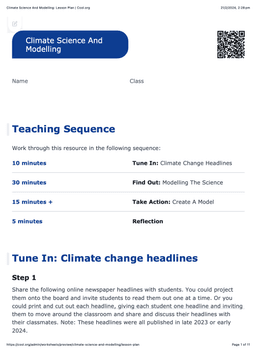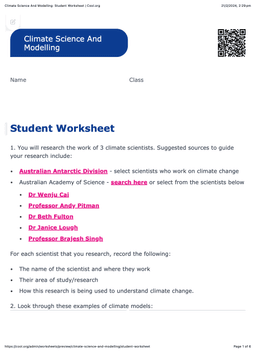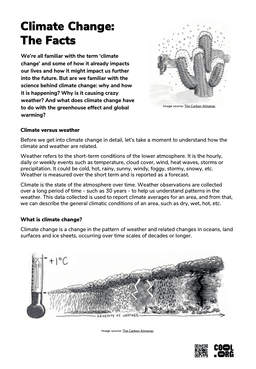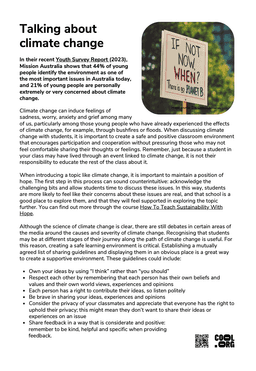
Climate Literacy: Climate Science And Modelling
Lesson4 of 5 in this unit
Cool+SecondaryYear 10ScienceEarth and SpaceEnvironmentalClimate Change
Summary
Lesson guides and printables
Lesson Plan

Student Worksheet

Climate Change Factsheet

Talking About Climate Change Factsheet
